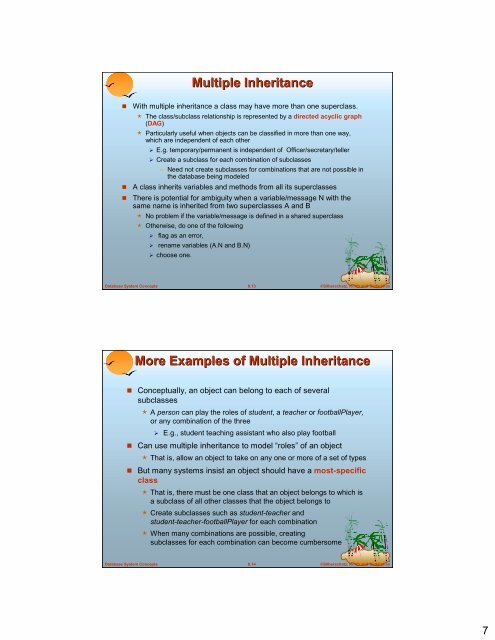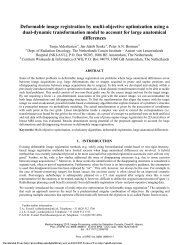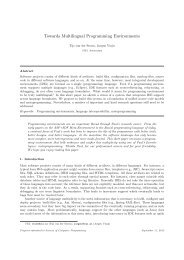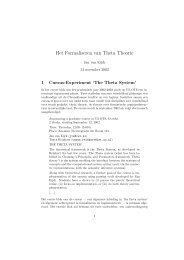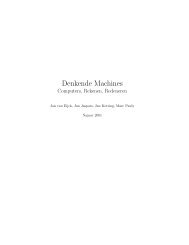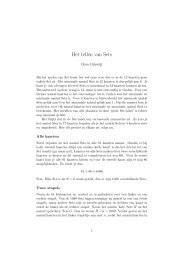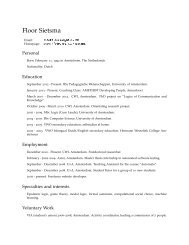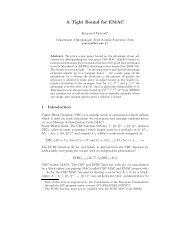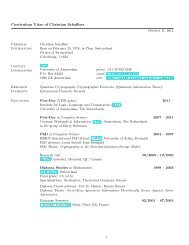Object-Oriented Databases Need for Complex Data Types - CWI
Object-Oriented Databases Need for Complex Data Types - CWI
Object-Oriented Databases Need for Complex Data Types - CWI
Create successful ePaper yourself
Turn your PDF publications into a flip-book with our unique Google optimized e-Paper software.
<strong>Data</strong>base System Concepts<br />
Multiple Inheritance<br />
With multiple inheritance a class may have more than one superclass.<br />
The class/subclass relationship is represented by a directed acyclic graph<br />
(DAG)<br />
Particularly useful when objects can be classified in more than one way,<br />
which are independent of each other<br />
E.g. temporary/permanent is independent of Officer/secretary/teller<br />
Create a subclass <strong>for</strong> each combination of subclasses<br />
– <strong>Need</strong> not create subclasses <strong>for</strong> combinations that are not possible in<br />
the database being modeled<br />
A class inherits variables and methods from all its superclasses<br />
There is potential <strong>for</strong> ambiguity when a variable/message N with the<br />
same name is inherited from two superclasses A and B<br />
No problem if the variable/message is defined in a shared superclass<br />
Otherwise, do one of the following<br />
flag as an error,<br />
rename variables (A.N and B.N)<br />
choose one.<br />
<strong>Data</strong>base System Concepts<br />
8.13<br />
8.14<br />
©Silberschatz, Korth and Sudarshan<br />
More Examples of Multiple Inheritance<br />
Conceptually, an object can belong to each of several<br />
subclasses<br />
A person can play the roles of student, a teacher or footballPlayer,<br />
or any combination of the three<br />
E.g., student teaching assistant who also play football<br />
Can use multiple inheritance to model “roles” of an object<br />
That is, allow an object to take on any one or more of a set of types<br />
But many systems insist an object should have a most-specific<br />
class<br />
That is, there must be one class that an object belongs to which is<br />
a subclass of all other classes that the object belongs to<br />
Create subclasses such as student-teacher and<br />
student-teacher-footballPlayer <strong>for</strong> each combination<br />
When many combinations are possible, creating<br />
subclasses <strong>for</strong> each combination can become cumbersome<br />
©Silberschatz, Korth and Sudarshan<br />
7


